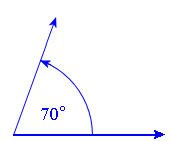Also in WV, but near the Ohio river valley, at the Mason Dixon line. Very steep hills, and small-ish tractor with 5' brush hog and front loader. Wheels loaded and spaced out, plus extra spacers to gain 9" over that. R1 ag tires. Factory ROPS, and built a full roll cage with limb risers that connect at the front grill guard. Loader always on, often with a 5' chunk of rail road track bolted inside the bucket for extra front
ballast. Ive used an angle meter and accurately mesured 30* side slopes and 45* up and down slopes... but its really clawing to climb up the 45*, mostly go down that steep. Feels like its standing on its nose going down that... I know my tractor well, and have been on many in the past 30+ years of running them.
Take some time and get to know your new machine, start on flater areas, and 'push the limit' a little more as you get more comfortable.
Find a ditch/bank, and test side hill angle, doing so in a place where if it flops over, you just hit the other side of the ditch, not barrel roll to the bottom of the holler (as is often a risk I face) and park it there. Assess the angle, and how it feels from the seat... learn from that and apply to real-world use.
Good luck, and be safe!

